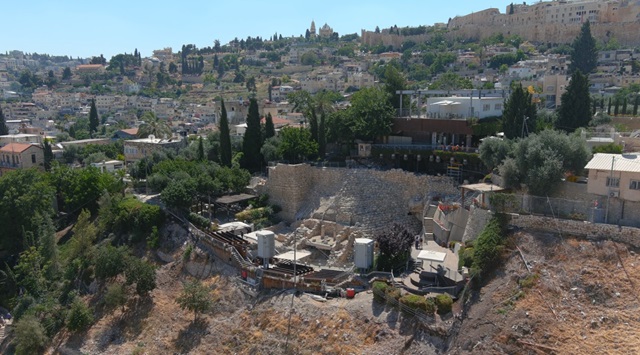Israeli archeologists carried out a new scientific study they described as being of “unprecedented scope” that succeeded in accurately dating antiquities from the First Temple period that were discovered in the City of David the ancient city of King David from 3,000 years ago. The archeologists said the study shed light on events mentioned in the Bible.
Among the conclusions of the research conducted by the Israel Antiquities Authority, Tel Aviv University and the Weizmann Institute of Science is that already in the 10th century BCE – the days of King David – extensive activity was carried out in Jerusalem; by the 9th century BCE – the days of King Jehoash and possibly even earlier, the city expanded to the west towards Mount Zion; the city wall unearthed in the City of David was not built during the days of Hezekiah as part of the preparations for the Assyrian siege, but rather earlier, during the days of King Uzziah, subsequent to the earthquake that occurred in Jerusalem
The research, published this week in the prestigious journal PNAS, challenges some of the perceptions that have been accepted until now regarding the construction activities of Jerusalem during the reigns of the kings of Judah. The researchers managed to accurately date the structures and walls built in Jerusalem during the First Temple period and to identify areas where there was extensive activity during the reigns of the kings of Judah. In doing so, it became possible to correlate between the biblical description of the royal construction activities in Jerusalem and the actual building activities uncovered in excavations over the past few decades in the City of David.
Will you offer us a hand? Every gift, regardless of size, fuels our future.
Your critical contribution enables us to maintain our independence from shareholders or wealthy owners, allowing us to keep up reporting without bias. It means we can continue to make Jewish Business News available to everyone.
You can support us for as little as $1 via PayPal at office@jewishbusinessnews.com.
Thank you.
The study presents over one hundred radiocarbon dates taken from four different excavation areas throughout the City of David, on the eastern and western slopes of the ancient city. These dates were obtained by sampling organic finds such as grape seeds, date pits, and even bat skeletons found in one of the structures. All of these underwent characterization and cleaning processes in laboratories and after being converted into graphite, they were inserted into a particle accelerator that moves at a speed of 3000 km per second, separating the carbon-14 from the organic material. Measuring the amount of carbon in the organic material and calculating it together with other variables allowed the researchers to accurately date many findings in the City of David.

The First Temple Period City fortification. The Study has revealed that it was built in the days of Uzziah and not by Hezekiah. Illustration: Leonardo Gurevich, City of David Archive
In the current research framework, the researchers used ancient tree rings from Europe at the Weizmann Institute of Science to create a precise timeline of single-year dates, from which it is possible to accurately learn about fluctuations in the percentage of carbon-14 in the atmosphere. This addition allowed for a much more accurate dating of periods for which radiocarbon dating is usually not accurate enough, and in this way, it helped to scientifically reconstruct for the first time the history of Jerusalem from 1200 BCE – before the days of David and Solomon according to the biblical description – to the Babylonian destruction in 586 BCE.
According to Prof. Yuval Gadot of Tel Aviv University: “The new research allows us to study the development of the city: until now, most researchers have linked Jerusalem’s growth to the west, to the period of King Hezekiah – just over 2700 years ago. The conventional assumption to date has been that the city expanded due to the arrival of refugees from the Kingdom of Israel in the north, following the Assyrian exile. However, the new findings strengthen the view that Jerusalem grew in size and spread towards Mount Zion already in the 9th century BCE, during the reign of King Jehoash, a hundred years before the Assyrian exile. In light of this, the new research teaches that the expansion of Jerusalem is a result of internal-Judean demographic growth and the establishment of political and economic systems.”




